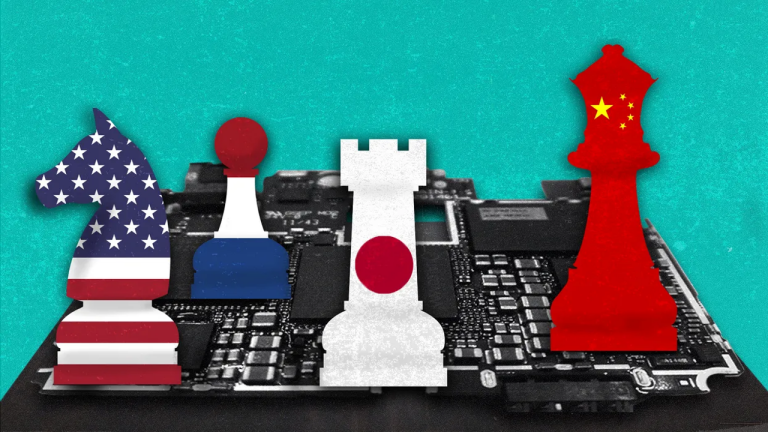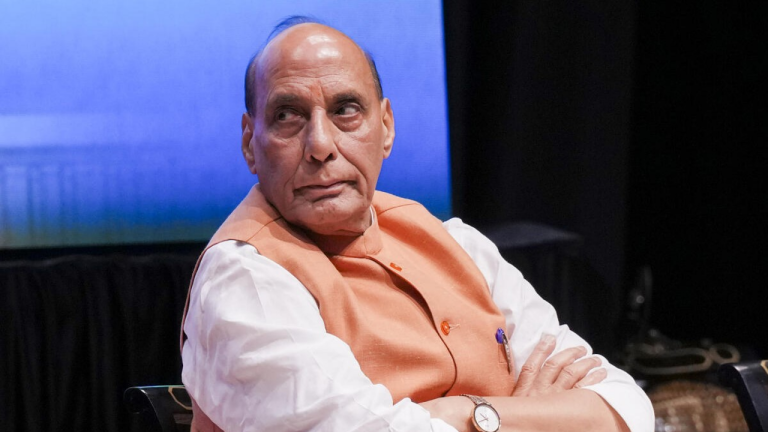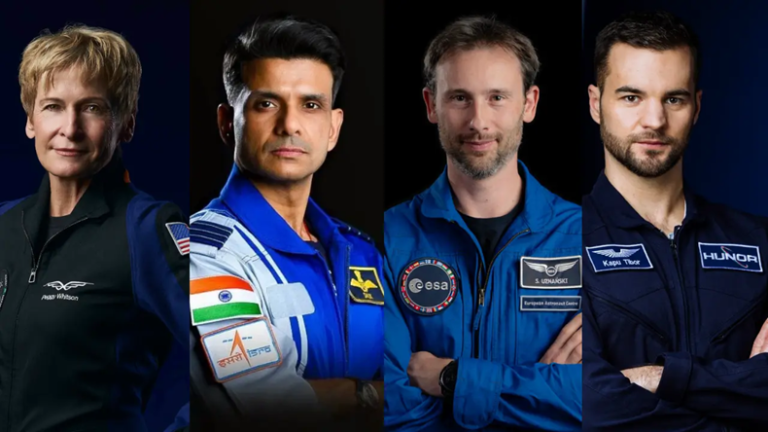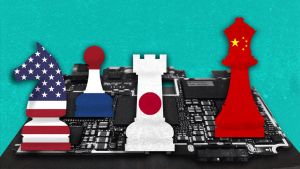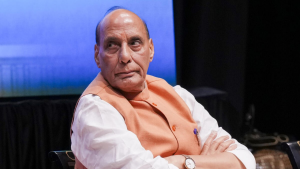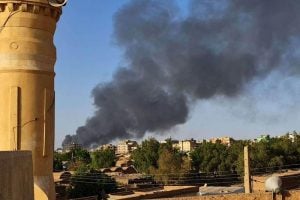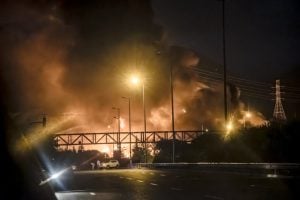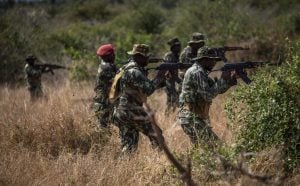Raksha Mantri Shri Rajnath Singh and Israeli Defence Minister telephonically discuss further strengthening defence ties
- Raksha Mantri Shri Rajnath Singh had a telephonic conversation with Defence Minister of Israel Lt Gen Benjamin Gantz. Both the Ministers expressed satisfaction at the progress of strategic cooperation between the two countries and discussed possibilities of further strengthening the defence engagements.
- They also expressed satisfaction at the ongoing collaboration in research and development in fighting pandemic COVID-19 which will not only benefit the two countries but also aid the larger humanitarian cause.
- Raksha Mantri invited greater participation of Israeli defence companies under new liberalised foreign direct investment (FDI) regime in defence manufacturing. The two Ministers exchanged views on regional developments. Defence Minister of Israel responded positively to an invitation from Shri Rajnath Singh to visit India at the earliest opportunity.
IAF reviews op preparedness and deliberates on its Roadmap for the next decade
- The IAF concluded its three-day Air Force Commanders’ Conference (AFCC) after a series of discussions and reviews on operational preparedness and strategies for countering security threats envisaged across the entire spectrum. They discussed the current situation and thereafter carried out a thorough review of the IAF’s transformation roadmap for the next decade
- Chief of Defence Staff (CDS), General Bipin Rawat, Chief of the Naval Staff (CNS), Admiral Karambir Singh and Chief of the Army Staff (COAS), General MM Naravane addressed the Conference and interacted with the Commanders as well as the Principal Staff Officers (PSOs) at Air HQ on matters of jointness and integrated war fighting. The Chief of the Air Staff (CAS) reviewed the status and issues related to all Commands as well as branches at Air HQ.
- In his closing address, the CAS articulated Vision 2030 laying down the milestones for transformation of IAF in the coming decade. He stated that it was important to recognize the nature of emerging threats in a rapidly changing world. He also emphasised on the need for rapid capacity building, increase in serviceability of all assets and dedicated work towards effective integration of new technologies in the shortest timeframes.
- CAS reiterated that the IAF’s long term goals for sustainable capability mandate the acquisition and employment of niche technologies and development of indigenous platforms and weapons. The Chief stated that since human resource was the most valuable asset of the IAF, recruitment, training and motivation strategies should keep pace with the changing times.
Indonesian Defence Minister to pay three-day India visit
- Indonesian Defence Minister Gen Prabowo Subianto will pay a three-day visit to India beginning Sunday, during which he will hold talks with the leadership here to strengthen bilateral defence cooperation.
- Gen Prabowo will be visiting India from July 26 to 28 and will lay a wreath at the National War Memorial on Monday, the Army said.
- He will be also presented with a Guard of Honour at South Block Lawns on Monday, it said.
- The Indonesian defence minister will hold talks with the Indian leadership to firm up the bilateral defence collaboration.
40 days after bloodshed, Indian Army fighting vehicles pull back from Galwan flashpoint
- In a clear sign, both of distrust as well as logistical problems caused by melting snow swelling the Galwan river, the Indian Army will shortly pull back the last of its infantry fighting vehicles from near Patrol Point 14. It was here, 40 days ago, that Indian and Chinese troops faced off in an extended and violent clash that left 20 Indian Army men and at least 16 Chinese Army personnel dead.
- It is this rollback of the Indian Army vehicles that will mark the gruelling completion of the first pullback phase agreed upon by both sides in this area.
- In the days that followed the bloodshed, Indian infantry fighting vehicles and other military vehicles had rumbled towards the flashpoint from posts near the Shyok-Galwan confluence.
- In the first week of July, with both sides agreeing to form a buffer zone of 1.5 km on each side, troops had pulled back, though several Indian Army vehicles had remained in the buffer zone. The Chinese side had fully cleared the buffer zone of its positions by this time.
- Following an agreement at the fourth round of Corps Commander-level talks between the two armies at Chushul, the Indian Army pulled back most of the vehicles by July 20. India Today TV learns the last of the Indian vehicles will be pulled back by this weekend across a set of new bridges constructed on the river.
- The rollback of the Indian Army vehicles has been a difficult process owing to the swollen river breaking its banks. Chinese positions near the buffer zone have similarly been marooned by swelling bends in the river, through areas earlier identified have also since cleared.
- The necessarily slow rollback at Galwan has amplified the huge terrain and logistical challenges faced by both sides in the narrow river valley. The pullback of the vehicles will, however, complete the first phase of the pullback agreed upon by both sides.
- But things could change dramatically in the Galwan Valley, with developments across two other friction points — the Gogra Post at Patrol Point 17A and the Fingers complex at Pangong Tso — validating India’s distrust of Chinese commitments to troop disengagement.
- As India has reported consistently since the standoff began, the Pangong sector has proven to be the trickiest flashpoint to disengage from, and now the tentative pullback of token troops stands fully paralysed at Finger 5.
- Serious differences over status and claims have brought the de-escalation process to a complete halt for over 10 days now, with both sides now clear that another Corps Commander-level meeting — it’ll be the fifth — will be necessary. India Today TV learns this could happen next week.
- More ominous than the Chinese refusal to pull back further is the overriding Indian perception that the Chinese could actually re-occupy positions. Indian Army surveillance resources are currently fixed on the ‘mob of disengaged Chinese troops’, since infrastructure on the Chinese side provides them with the flexibility to bounce back at short notice.
- This is true across the friction points, and especially true at the Hot Springs sector. Here, the Chinese have pulled back more than at any of the other flashpoints. But smoother infrastructure allows them to rush back if necessary.
- While the Indian Army had always known that the disengagement process would be tedious, it is not taking any Chinese movements at face value. Monitoring of depth areas has gained enormous primacy, since this is where the Chinese could easily redeploy from — and in even bigger numbers.
- All of Ladakh’s rivers in spate has only heightened the difficult verification process. The Army is also keeping a close watch on China’s training areas along the western highway and the PLA’s capacity development in the area, because these are the area that will be activated should ‘intent’ change at any time.
- As India Today has reported, China’s deployments and mobilisation in the area confirm that the Ladakh standoff was no spontaneous flare-up, but part of a wider strategic effort by the People’s Liberation Army under Xi Jinping.
- What is clear is that the Chinese are in no mood to pull back any more or any further, forcing India to reinforce positions and plan logistically for what will be its largest winter deployment at those heights in decades. The Indian Army is also seriously looking to end the concept of a ‘road close period’ as soon as possible, with the current crisis hugely underscoring the need for 365 day connectivity across sectors. The determined infrastructure effort across four highways and multiple bridges in Ladakh is towards that end.
U.S. Army integrates tactical network systems onto combat vehicles
- The U.S. Army has reported that Army Futures Command (AFC) is using rapid prototyping to integrate tactical network systems, which will enhance functionality of the Soldier-worn Integrated Visual Augmentation System, onto combat and tactical vehicles.
- The details were given in a 23 July media release, to announce that Integrated Visual Augmentation System (IVAS) provides Soldiers with improved situational awareness capabilities as they fight, train and rehearse missions. IVAS capabilities include a digital display to access information without taking eyes off the battlefield, thermal and low-light sensors, rapid target acquisition, aided target identification and augmented reality.
- The Command, Control, Communications, Computers, Cyber, Intelligence, Surveillance and Reconnaissance (C5ISR) Center — a component of AFC’s Combat Capabilities Development Command — is leading the prototyping efforts, in coordination with IVAS developers and network project management offices. The Center uses its in-house expertise to inform and refine the design, fit and function needed to house and integrate network components, including radios, servers and cables.
- The C5ISR Center started design work this spring to integrate IVAS devices with Stryker armoured vehicles, leading to Vehicle Excursion 2 (VE2) in January 2021 at Joint Base Lewis-McChord, Washington. The Soldier Lethality Cross-Functional Team (SL CFT) will host VE 2 with about a dozen participating organizations from Army research and development, acquisition, and operational forces. It will be a static vehicle user study focused on assessing the utility and proof of concept of new capabilities on Strykers and Bradley Fighting Vehicles to gain early Soldier feedback.
- To enhance IVAS network connectivity and capabilities, C5ISR Center engineers and network system developers engineered a network communications gateway and data management kit known as Project Bloodhound in 2019. The C5ISR Center delivered the integrated network kit mounted on an MRZR all-terrain vehicle, which allowed dismounted Soldiers using IVAS to connect into the broader Army tactical network to share and receive data.
- This prototype and others will enhance modernization efforts led by the C5ISR Center, SL CFT, the Network CFT, Program Manager IVAS, and PM Tactical Radios.
- Bloodhound allows greater connectivity throughout the company echelon, through a tactical radio integration kit that includes radio gateways that enable voice and data information to be pushed and pulled from multiple sources. This concept is being applied to the Stryker prototype effort.
- “We designed Project Bloodhound as a modular vehicle-mounted system that can be integrated into any vehicle,” said C5ISR Center mechanical engineer Ryan Stuk. “Certain features could be employed in a command post or dismounted capacity. We’re now taking the knowledge and expertise gained from the MRZR integration and applying those to Strykers.”
- The Stryker effort will provide additional capabilities for Soldiers, whether they are mounted, dismounted or in transition, Stuk said. The Army’s three objectives are to leverage the Strykers as an IVAS power source to maintain mission capability, integrate with existing and future vehicle-based onboard camera systems, and enhance Soldiers’ situational awareness while mounted or transitioning to dismounted.
- The Center’s organic, internal prototype integration facility (PIF) has enabled the Army to meets its objectives for multiple design iterations, changing requirements and quick deadlines, said Tom Brutofsky, chief of the C5ISR PIF. A key aspect to Project Bloodhound has been additive manufacturing, commonly known as 3D printing.
- “The C5ISR PIF has invested heavily in additive manufacturing to develop a rapid prototyping capability to deliver functional designs with significant cost and time savings,” Brutofsky said. “The PIF manufactured the MRZR Bloodhound prototype approximately 80 percent through additive processes and went from concept to functional prototype in less than three months.
- “Additive manufacturing also enables easier modifications as engineers gather Soldier feedback during exercises and as the Army identifies additional vehicles for network kit integration.”
- Soldier touch points like VE2 enable the Army to transition from R&D to prototypes and then mature capabilities for fielding.
- “For the C5ISR Center, incorporating Soldier feedback is essential,” Brutofsky said. “Understanding the needs of Soldiers on the battlefield early on helps us make better use of time and resources.”
REVIEW QUESTIONS
- Defence Minister of Israel:
- Lt Gen Benjamin Gantz
- Jeong Kyeong-doo
- Mark T. Esper
- Nosiviwe Mapisa-Nqakula
ANSWER: A
- Indonesian Defence Minister:
- Mark T. Esper
- Nosiviwe Mapisa-Nqakula
- Sergey Shoygu
- Gen Prabowo Subianto
ANSWER: D





